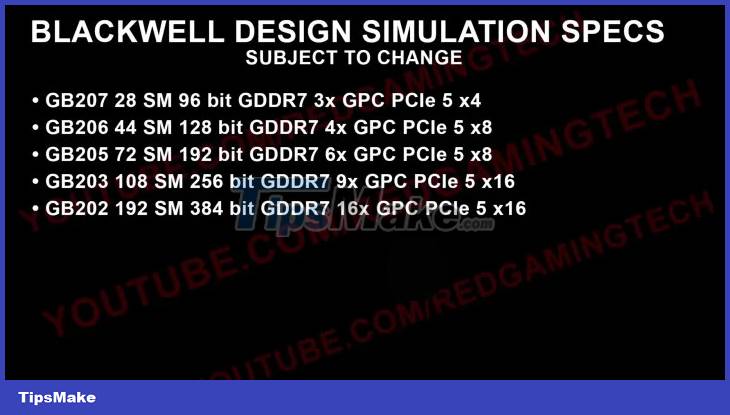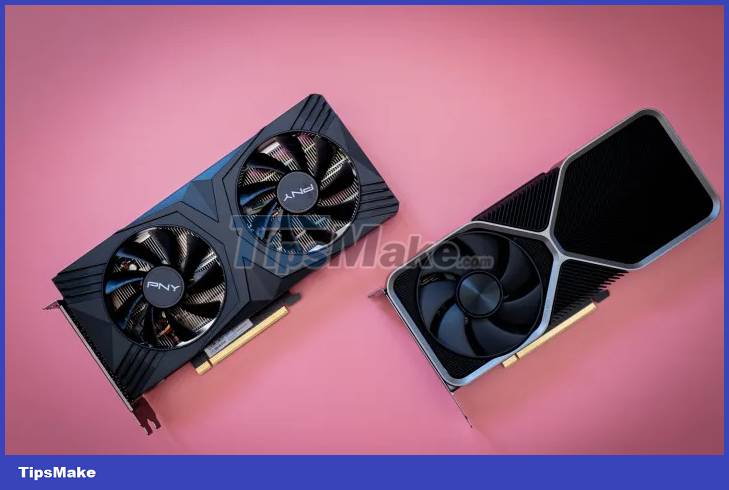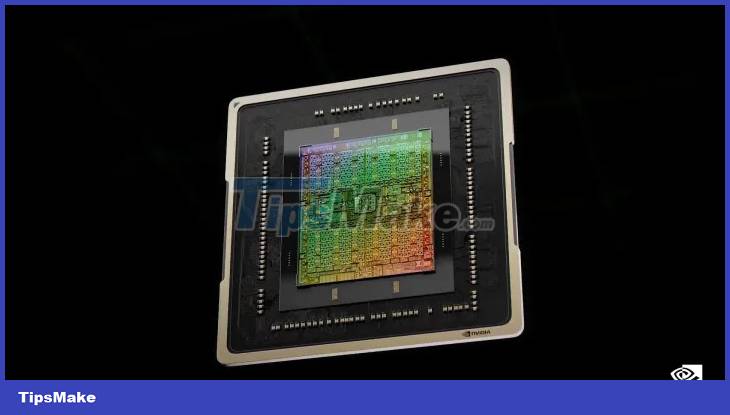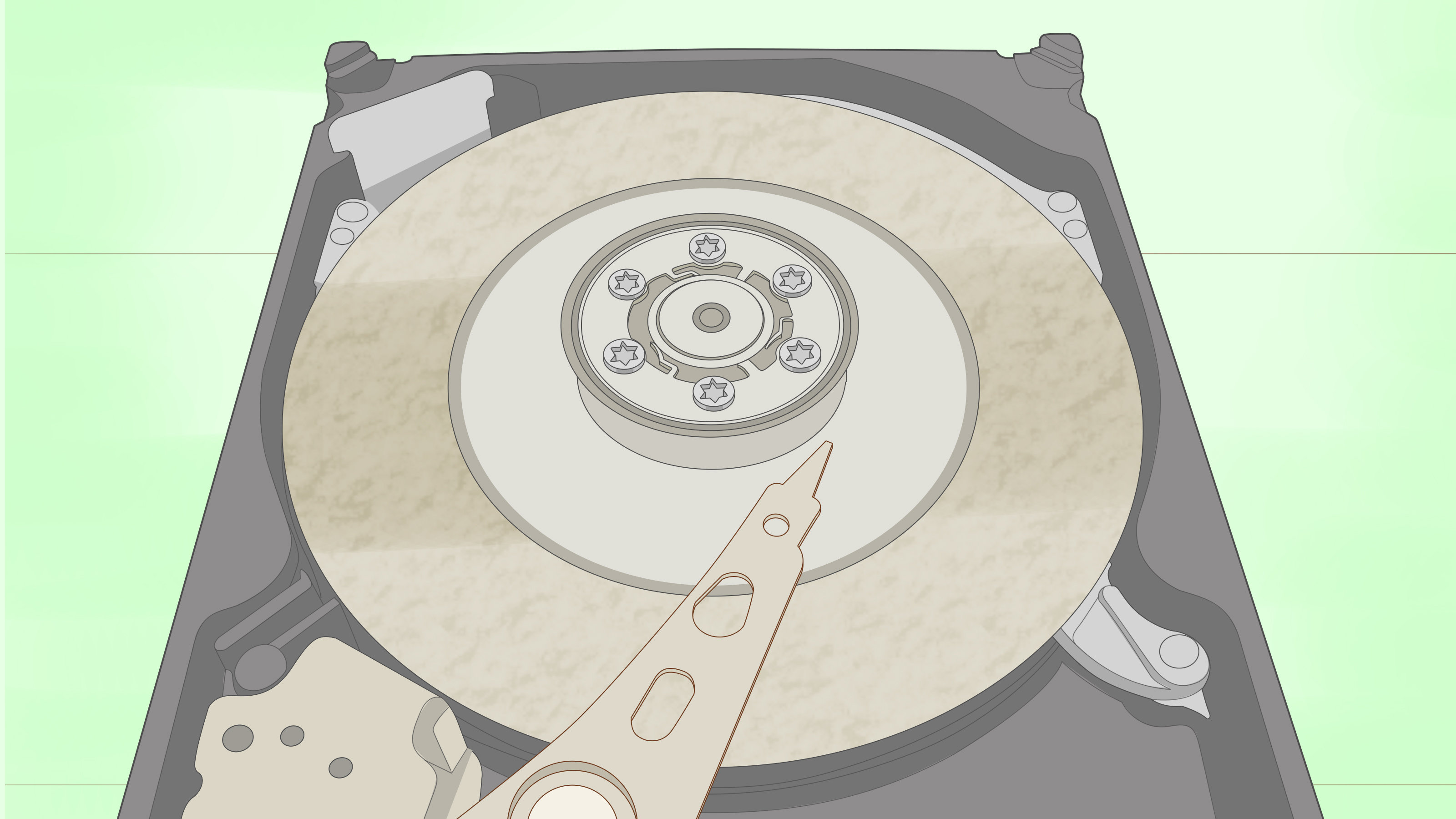Summary of information about Nvidia RTX 50 Series graphics cards
The release date of the RTX 50 Series GPUs is still very far away, but various rumors and leaks have given us a better idea of what to expect. Here's everything we know about Nvidia's upcoming generation of graphics cards.
Specifications
| Nvidia RTX 50-series | |
| Process node | TSMC 3nm |
| Architecture | Blackwell |
| Chips | GB202, GB203, GB205, GB206, GB207 |
| Memory type | GDDR7 |
| Maximum bus width | 384-bit |
| Display connector | DisplayPort 2.1, HDMI 2.1 |
With the release of the RTX 50 series GPUs a long way off, Nvidia has yet to confirm any specifications for any of the cards. In fact, we're not even sure which model is on the way. However, compiling speculation from various sources gives us some idea of what to expect.
The next version of Ada Lovelace will be called Blackwell, honoring American mathematician David Blackwell. It is rumored that it will be manufactured by TSMC based on the 3nm process, but it is unclear whether Nvidia will use one of TSMC's existing 3nm nodes or a custom node.
The product line is said to include chips from the high-end GB202, equivalent to the RTX 4090, to the entry-level GB203, GB205, GB206 and GB207. If proven true, this would be an interesting or worrying change. That means the AD104 GPU powering the RTX 4070 won't have a successor in the next generation. Therefore, it is possible that the RTX 5070 and RTX 5070 Ti will use the GB205 chip.
One of the most controversial sources of information about the RTX 50 series is kopite7kimi on X (formerly Twitter), revealing that we can expect the new GPUs to feature DisplayPort 2.1 support, something the Lovelace series does not offers and also HDMI 2.1. The user also revealed that the RTX 50 Series cards will feature next-generation GDDR7 memory and the maximum memory bus width is said to be 384-bit. This goes against previous speculation that the RTX 5090 could have a 512-bit memory bus.
 Summary of information about Nvidia RTX 50 Series graphics cards Picture 1
Summary of information about Nvidia RTX 50 Series graphics cards Picture 1
A recent leak from YouTuber RedGamingTech has given us our first look at what the specs might look like on the different chips in the lineup. According to specifications shared by RedGamingTech, the flagship chip could come with 192 SM (streaming multiprocessors), up from 144 in the AD102. GB203 marks a big step forward, with only 108 SM (up from 80 in AD103). However, if the RTX 5090 gets most of those SMs and the RTX 5080 gets the GB203 chip, there will again be a huge performance gap between the two cards - just like there is this generation.
The amount of VRAM in GPUs has been a hot topic lately, and RedGamingTech speculates that we could see up to 36GB of memory in the RTX 5090. However, those numbers are not yet finalized, so we will probably end up with 24GB like in the RTX 4090.
Another prediction from this YouTuber says that GB207, meaning the chip with the worst performance in the product line, may initially only appear on laptops. This is consistent with what we've seen in the RTX 40 series, where the RTX 4050 has so far only appeared on laptops.
It's too early to know the specifics of each individual card at this point, and all of this is subject to change. It's likely Nvidia will release models ranging from the RTX 5060 to the RTX 5090, with some Ti options added to the mix. Hopefully the company will keep the specs balanced to offer a variety of cards for enthusiasts and entry-level users alike.
Price and release date
 Summary of information about Nvidia RTX 50 Series graphics cards Picture 2
Summary of information about Nvidia RTX 50 Series graphics cards Picture 2
Haven't heard any specific information from Nvidia about a release date yet - but most estimates peg the Blackwell launch around late 2024, early 2025.
According to early rumors, Nvidia is said to not be ready to launch new graphics cards until 2025. This will give AMD a big advantage as it is rumored to launch RDNA 4 GPUs later this year. However, according to Moore's Law Is Dead, Nvidia may not be able to give AMD the headroom it so desperately needs.
Moore's Law Is Dead said in a recent video that sources at Nvidia have told him that "Blackwell is on track to launch in Q4 2024," but only if Nvidia wants it. This depends on whether RDNA 4 is competitive enough to take away Nvidia's sales during the holiday season later this year, as well as how Ada's sales do over the period. there.
Whatever the case, Nvidia is said to be planning to 'make a big deal about RTX 5000 performance at CES 2025'. This means the GPU is expected to launch in late 2024 or near early 2025.
 Summary of information about Nvidia RTX 50 Series graphics cards Picture 3
Summary of information about Nvidia RTX 50 Series graphics cards Picture 3
The prices of these GPUs are speculative at this time. Nvidia has adopted a premium pricing strategy, so the next generation of GPUs could follow that path and push prices even higher, especially if demand for AI GPUs remains as high as it is now. After all, current demand has pushed the RTX 4090 above $2,000, even though it launched at an already hefty price tag of $1,600. This certainly makes the RTX 5090 a worrying prospect, but Nvidia's recent price cut for the RTX 40-series Super refresh has given many enthusiasts some hope.
Assuming the Flagship 5090 will cost close to $2,000, the rest of the product line is likely to see price increases follow. However, for Nvidia to remain a competitor to AMD, prices cannot continue to increase forever. There's some hope that Nvidia will realize this and keep prices more reasonable in this next generation, but it's too early to say any of that.
Architecture
 Summary of information about Nvidia RTX 50 Series graphics cards Picture 4
Summary of information about Nvidia RTX 50 Series graphics cards Picture 4
Nvidia is keeping the architecture used in the Blackwell chip a secret. Currently, all we have is speculation from many different sources, and this information is often somewhat contradictory.
RedGamingTech talked a lot about the Blackwell architecture in a recent video. This YouTuber calls it 'one of the most influential graphics architectures', predicting that the RTX 50 series will bring significant improvements to things like Path Tracing and Ray Tracing, benefiting both cards. high and mid-range.
To that end, the YouTuber says we could see significant architectural changes, including a major redesign of Nvidia's SMs. He also mentioned adding a denoising accelerator, either as part of the chip or as a function of Nvidia's Tensor cores. More importantly, RedGamingTech initially revealed that Nvidia could use a multi-chip module (MCM) design. This means a design method in which many smaller chips are packaged together to form a single, larger and more powerful processor. Switching to an MCM design instead of a monolithic one could give Nvidia a big advantage, including scalability, higher productivity, and more design flexibility.
Unfortunately, a recent update from the same YouTuber revealed that Nvidia will not be using the MCM design in Blackwell. It is known that Nvidia initially planned to use dual GB202 dies glued together, possibly with some SM trimmed, but ultimately decided to change. The YouTuber commented that issues such as high price, latency between the two dies, and various difficulties in getting it working kept Nvidia sticking with its previous architecture.
It's possible Nvidia was planning to switch to MCM in the future, but such architectural changes have never been made at the last minute, so plans for Blackwell may never have existed. However, it's also possible that Nvidia will introduce architectural changes instead of pushing peak performance to allow the new technology to mature before increasing performance in RTX 6000 series graphics cards over the next few years.
Power consumption
 Summary of information about Nvidia RTX 50 Series graphics cards Picture 5
Summary of information about Nvidia RTX 50 Series graphics cards Picture 5
Before the launch of the RTX 40 series, the flagship RTX 4090 was the subject of a lot of rumors, and its power consumption was a particularly hot topic. Some sources claim that the GPU will have truly terrible power consumption, even up to 900 watts. We now know that those claims were false because the RTX 4090 consumes 450 watts and its connector supports up to 600W of power. It's hard to imagine Nvidia pushing those numbers even higher in the next generation of GPUs.
However, the RTX 50 series has not been able to avoid some controversy related to power consumption. Moore's Law Is Dead recently revealed that Nvidia is planning to use a completely new connector, which would be the fourth change in three years. This YouTuber, citing anonymous sources, claims that Nvidia is moving to a 16-pin connector, all dedicated to 12V power delivery. However, many other sources indicate that this is unlikely to happen.
Hardware Busters contacted its own sources and confirmed that 'no one knows about the new connector'. Nvidia will have to cooperate with major PSU brands, especially after the problem with the 12VHPWR connector. If these brands didn't know about it, Nvidia might not have made these changes in this generation.
Assuming Nvidia uses the (somewhat controversial) 12VHPWR connector it currently uses, maximum power consumption will remain at 600W. The flagship RTX 5090 could continue to see increased power consumption if it delivers significantly more performance, but it still needs to leave some headroom for overclocking, so a 500W maximum seems reasonable.
As for the rest of the lineup, Nvidia will likely try to keep things conservative instead of pushing for higher power consumption. As NotebookCheck points out, Nvidia's current trend of increasing total board power (TBP) is still fairly new - especially on cards like the RTX 4080. Historically, xx80 cards have always been below 300W, even Sometimes it drops below 200W. Over the last few generations, the RTX 3080 and RTX 4080 have both pushed TBP to new heights, each claiming up to 320W of power.
With power consumption this high, it doesn't make much sense for Nvidia to continue pushing the power even higher, especially since AMD is likely to keep it more conservative in RDNA 4. If we back up a bit , we can see the RTX 5080 has a TBP of around 250W to 280W. However, if Nvidia sticks to its current plan, it could go in the other direction and reach power levels as high as 350W.
You should read it
- Disable the NVIDIA component to speed up the computer
- NVIDIA's new RTX 4060 series of GPUs will start at just $299
- Nvidia postponed the launch of RTX 4080 12GB due to backlash from the market
- How Does NVIDIA's GTX 3080 Compare to the 3090?
- NVIDIA introduces the GeForce GTX SUPER Series graphics card: The 'Hero' of every gamer
- Nvidia launched GeForce GTX 1650 GPU, affordable, good performance
- Samsung launched RF series and laptops for entertainment
- Best graphics card (GPU) 2020
- Nvidia's 7nm process GPU will probably launch in 2020?
- How to fix the NVIDIA graphics card error is not displayed in Device Manager
- NVIDIA Jetson chipset contains a series of security holes that allow data theft, DDoS attacks
- Which graphics card is good for gaming laptops
May be interested

Nvidia will release a new software solution, replacing Nvidia Control Panel and GeForce Experience

Crucial launches the fastest PCIe 5.0 SSD model ever created, speeds up to 14.5GB/s

5 best gaming keypads in 2024

How to Destroy a Hard Drive

How to Connect HP Deskjet 3050 to a Wireless Router

How to Test Webcam on PC or Mac






 NVIDIA introduces the GeForce GTX SUPER Series graphics card: The 'Hero' of every gamer
NVIDIA introduces the GeForce GTX SUPER Series graphics card: The 'Hero' of every gamer Cheap 3D graphics cards from AMD and Nvidia
Cheap 3D graphics cards from AMD and Nvidia Top best graphics cards (GPUs) 2024
Top best graphics cards (GPUs) 2024 NVIDIA officially announces high-end GPU series RTX 5090 and RTX 5080
NVIDIA officially announces high-end GPU series RTX 5090 and RTX 5080 The newly launched RTX 50-series cards have encountered a series of problems, Nvidia admits the problem
The newly launched RTX 50-series cards have encountered a series of problems, Nvidia admits the problem HP laptops are 'cheap' because of Nvidia graphics cards
HP laptops are 'cheap' because of Nvidia graphics cards